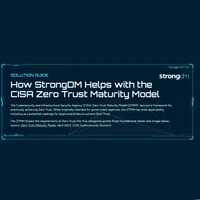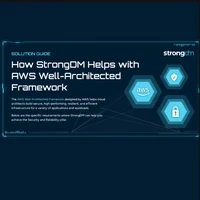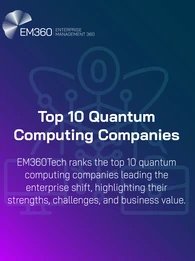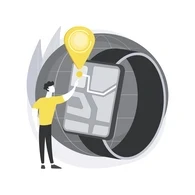
Geoff Kneen, Group Managing Director, Content+Cloud
From the onset of the pandemic, business leaders were forced to make quick decisions to implement technologies that would enable remote working and ensure business continuity throughout lockdowns. As a result, we now exist in a paradigm in which remote and hybrid models of work are the norm. To ensure ongoing growth and transformation in this new environment, businesses must closely consider the long-term requirements and capabilities of their technology implementations.
There is a lot at stake when it comes to hastily implemented technology, as unsuitable tools have the potential to cause business disruption, leading to poor ROI and employee experience. If pandemic-led technology initiatives are not aligned to longer-term digital transformation journeys, businesses can experience low productivity, low employee engagement and even larger-scale disruption to their operations.
To avoid risks and maximise the value of the solutions they adopt, organisations must look at their technology stack from a fresh perspective and consider whether these deployments will foster growth over time in a hybrid world of work, all while empowering employees in their roles.
Maximising technologies’ potential
Before implementing new tools, it is essential that organisations ensure they are using their existing technologies, and associated licences, to their maximum potential. Platforms such as Microsoft Teams were adopted by numerous businesses during the pandemic for their video conferencing capabilities. But as the product has evolved in the interim, there are a wealth of features now available that could help organisations further streamline the hybrid working experience.
With Teams, users can benefit from instant messaging, filesharing, scheduling and file storage. Further to this, the potential to integrate Microsoft Viva means businesses can bring an intelligent intranet and increasingly personalised content into Teams to enhance employee experience.
To gain the most from your enterprise technology, you must have a view of each product’s individual capabilities and together, their collective potential. This can be done through consulting subject matter experts within your organisation, or by tapping into the knowledge of your existing technology partner.
Prioritising employee experience
Now that hybrid working is a permanent fixture, the focus has shifted from technologies that enable it to hybrid technology solutions that enhance employee experience and make remote working as seamless as possible.
This does not mean emulating the office experience, rather, it means enabling employees to operate effectively wherever they are, be it a café, co-working space, on the move or at home.
A point that bears repeating as we continue to adjust to the new normal is technology should not hinder your employees’ working lives. And yet, for many organisations, hastily adopted platforms are convoluting processes and making tasks more arduous than before.
Cumbersome processes that eat into users’ time, such as the requirement to log into multiple platforms or attend a surplus number of meetings, can lead to low adoption and an increasingly negative relationship between users and hybrid technology solutions.
Hastily implemented tools and technologies may be set up for failure from the get-go, as traditional change management initiatives cannot be afforded the time they need. Failed transformation projects are often put down to unsuitable technologies, but how they are implemented is just as integral to their success.
When the pandemic hit, there was no time to establish a gradual migration to cloud-based communication and collaboration platforms, meaning support for such transitions was minimal—albeit necessarily so.
Goal-orientated change management models are immensely valuable in supporting and engaging employees. As well as making significant improvements to employee experience, a well-designed business change and user adoption programme can boost the return on a business’ technology investment. Now, as the dust settles, businesses should seek to redress their implementation processes and assess how migration to new digital channels should have occurred.
Striking the monitoring balance
To establish an effective long-term remote working model, businesses must ensure employees are provided with the support they need to remain productive. The first step should not be technology-led, but rather a conversation between managers and their teams, so that specific requirements can be understood and, where possible, accommodated. As mentioned above, hybrid technology solutions can become a hindrance if not managed effectively.
When it comes to quantifying productivity, there is a fine balance to strike between support and practices that may lead to employees feeling closely monitored and not trusted. This is particularly important when the lines between personal and work time become less defined, as studies show that the working week of remote workers has grown. Again, businesses must understand the impact their adopted technology has had, and continues to have, on employees and adjust practices in line with feedback.
Increasingly, AI-powered tools are able to automate this management, providing users with personal analytics that deliver valuable insights around productivity relating to meetings, available focus time and unaddressed tasks. Additionally, and perhaps more importantly, technologies such as Microsoft Viva Insights can identify when employees might be working too much. Indicators such as email overload, after-hours work, lack of focus time and poor collaboration across teams, alert users and managers and can prompt conversations that promote better working behaviours.
Aligning technology with long-term strategic goals
There are several challenges for IT decision-makers when acquiring and implementing new technologies. They must consider whether each new tool or platform will benefit all users across the organisation, deliver against business objectives and ultimately deliver value. These factors were overlooked by many during the first lockdown, but the advent of the hybrid world of work means organisations must bring these considerations back into focus.
Realigning implementations with overall transformation goals does not have to mean starting from scratch. By taking the time to realise the potential of these platforms and to understand how to effectively implement them, businesses can tap into their long-term value. This will save organisations time and money through avoiding investments in additional technologies and improving ROI on their existing tech stack.














Comments ( 0 )